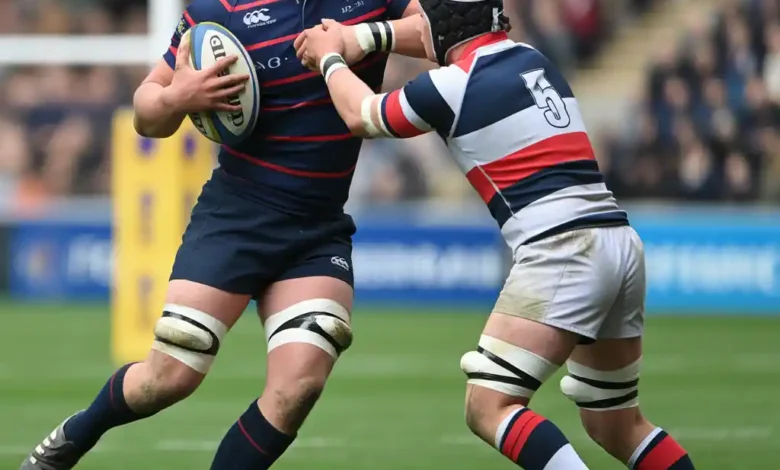Rugby Union National League 1: Full Guide to England’s Third-Tier Rugby Competition

The Rugby Union National League 1 stands as the third tier of English rugby union, just below the RFU Championship and the Premiership. While it may not receive the same level of media coverage as the top divisions, National League 1 is a breeding ground for emerging talent, passionate rivalries, and deeply rooted club histories. For fans, players, and analysts who appreciate the raw, grassroots essence of the sport, this league is a treasure trove of drama, skill, and community engagement. As England’s rugby pyramid continues to evolve, the National League 1 offers insights into how local clubs contribute to the national landscape and how promotion and relegation systems shape the future of rugby union across the UK.
What is Rugby Union National League 1?
National League 1 is the third level of rugby union in England and is governed by the Rugby Football Union (RFU). It sits directly beneath the Championship and above National League 2, making it a vital stepping stone for clubs aiming to rise through the ranks. Established in 1987 under the name “Courage League National Division Three,” it has undergone multiple rebrandings and structural reforms over the decades. Despite changes, its core mission remains consistent — to foster competitive rugby among semi-professional and ambitious amateur clubs. The league plays a crucial role in offering a platform where rising stars get the exposure and experience they need before transitioning to higher-tier teams.
League Structure and Format
Rugby Union National League 1 features 14 teams that compete in a round-robin format. Each team plays the others twice — once at home and once away — resulting in a total of 26 games per club per season. Points are awarded based on match results: four points for a win, two for a draw, and none for a loss. Bonus points are given for scoring four or more tries in a game or losing by seven points or fewer, incentivizing offensive play and close contests. This structure not only keeps the league exciting throughout the season but also allows for strategic decisions that can impact promotion and relegation outcomes. The top team at the end of the season is promoted to the RFU Championship, while the bottom teams are relegated to National League 2 (North or South depending on their geographic location).
The Importance of Promotion and Relegation
One of the defining features of National League 1 is its integral role in the promotion and relegation system of English rugby. This system ensures that clubs are constantly challenged and that the best-performing teams are rewarded with advancement. At the end of each season, the top club is promoted to the RFU Championship, providing a significant opportunity for growth, increased funding, and improved player recruitment. On the flip side, the bottom two or three teams are relegated, which often leads to financial strain and restructuring at the club level. This dynamic environment keeps the league competitive and ensures that teams maintain high standards year-round.
Clubs and Fan Culture
National League 1 is home to some of the most historic and community-driven clubs in English rugby. Teams like Rosslyn Park, Blackheath, and Darlington Mowden Park bring decades of tradition to the pitch, with loyal fanbases that support their local heroes regardless of league status. These clubs often rely on community funding, volunteer support, and local sponsorships to survive, making the connection between the team and the town deeply personal. Unlike larger commercial leagues, the atmosphere in National League 1 stadiums is intimate and authentic, allowing fans to get close to the action and form bonds with players and staff alike.
Challenges Facing National League 1
Despite its rich heritage, the Rugby Union National League 1 faces several modern challenges. Financial constraints are among the biggest concerns, as many clubs operate on tight budgets with limited revenue streams. Travel costs, player wages, and facility maintenance can all become burdens without strong commercial backing. Additionally, there is an ongoing debate about player welfare and the sustainability of semi-professional rugby in an era dominated by high-performance demands. Clubs must strike a balance between ambition and financial reality while maintaining their identity and integrity. Furthermore, with increasing focus on televised rugby at the Premiership and international level, National League 1 must find new ways to stay relevant in the eyes of fans and sponsors.
The Future of National League 1
Looking ahead, the future of Rugby Union National League 1 appears cautiously optimistic. The RFU has initiated various programs to support grassroots rugby and enhance the visibility of lower-tier competitions. Club collaborations, youth academies, and community outreach are helping to bolster participation and performance. There is also growing interest in live streaming matches and using social media to engage broader audiences. If these innovations are embraced, National League 1 could strengthen its role as both a developmental and competitive platform within the English rugby ecosystem. With strong leadership and community support, the league has the potential to thrive, adapt, and remain a vital part of the rugby pyramid.
Conclusion
Rugby Union National League 1 is far more than just the third tier of English rugby. It’s a proving ground for talent, a lifeline for community clubs, and a reflection of rugby’s deep cultural roots across the UK. While it may operate under the shadow of more prominent leagues, its impact on player development, fan engagement, and regional pride cannot be overstated. As rugby continues to grow and evolve, National League 1 will remain a critical cornerstone — bridging the gap between grassroots passion and elite-level competition. Whether you’re a seasoned fan or new to the sport, this league deserves your attention and admiration for everything it contributes to English rugby.
❓ Frequently Asked Questions (FAQ)
Q1: What level is Rugby Union National League 1?
A: National League 1 is the third tier of rugby union in England, below the RFU Championship and the Premiership.
Q2: How many teams are in National League 1?
A: There are typically 14 teams in National League 1, each playing 26 matches per season in a home-and-away format.
Q3: How does promotion work in National League 1?
A: The team that finishes top of the table at the end of the season is promoted to the RFU Championship. Relegation also occurs, with bottom teams dropping into National League 2 North or South.



